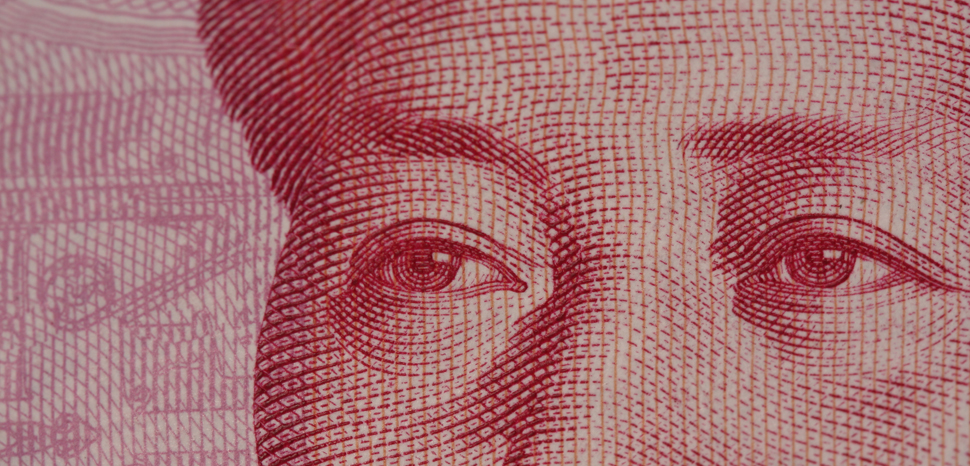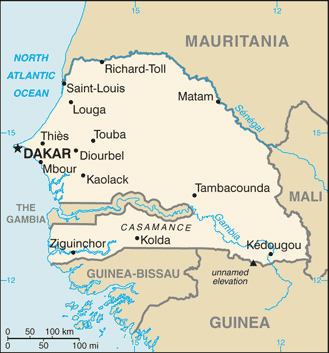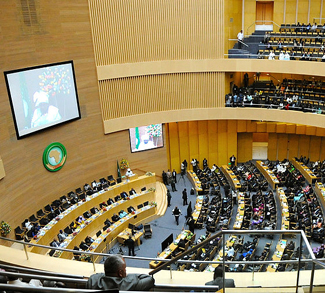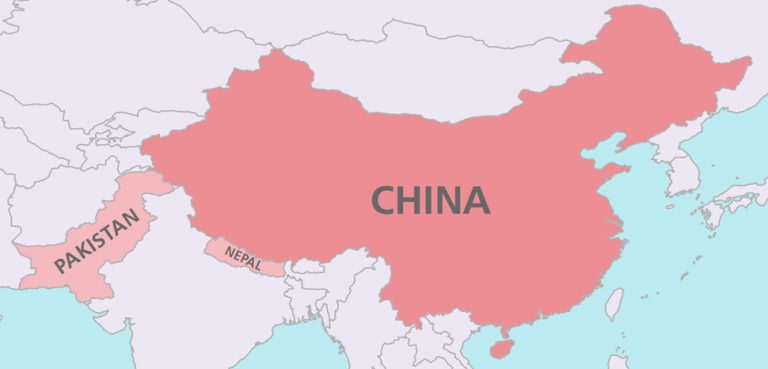In June 2015, the creation of the Asian Infrastructure Investment Bank (AIIB) was agreed to by representatives of 50 countries in Beijing, China. The Bank started operating in January 2016 and its first four loans – totaling USD 509 million – were approved for Bangladesh, Indonesia, Pakistan, and Tajikistan. Moreover, a location in Beijing was chosen as the headquarters of this new multilateral banking organization.
The AIIB started with an initial capital of USD 100 billion. In order to keep things in perspective, the sum is roughly equivalent to Ecuador’s GDP. So far, it has approved projects related to hydropower, energy, motorways, tourism, dams, pipelines, and ports, amongst others.
This venture has captured considerable interest. For instance, some economists foresee the AIIB becoming a formidable competitor of the World Bank and the International Monetary Fund, entities established within the framework of the Bretton Woods system during the aftermath of World War Two, and whose governance has been historically controlled by Atlanticist powers ever since. In fact, this reality still persists in the early 21st century. However, that is hardly surprising if one considers that – more often than not – intergovernmental institutions reflect the interests of their creators.
On the other hand, the impressive list of full members includes a diverse myriad of states from Europe, Central Asia, the Middle East, the Asia Pacific region, the former Soviet Union and even from the Americas. This list includes great powers, offshore financial centers and, interestingly, NATO members and other US allies. Hence, the AIIB represents the most ambitious formal multilateral initiative sponsored by China. Its membership is even wider than that of the Shanghai Cooperation Organization (SCO), an institution conceived to encourage a closer strategic, military, and economic collaboration amongst China, Russia, and four Central Asian republics.
Even though the AIIB is of course an economic and financial institution, its reach and nature must also be analyzed from a perspective of grand strategy. Actually, it can be argued that – well beyond the technical realm of business and mercantile concerns – the AIIB responds to China’s goal of developing finance as a tool to advance its interests on the global geopolitical chessboard. According to this multidimensional interpretation, the AIIB pursues five parallel objectives:
Undermining American Plans to Establish a Political and Commercial «Cordon Sanitaire» around China
The mammoth territorial and demographic proportions of the Asian juggernaut, as well as the size of its economy – a 2017 GDP of more than 12 trillion dollars, which makes it the world’s second largest – in combination with its rising techno-industrial and military power means that China represents a formidable candidate to become the center of gravity in the Asia-Pacific region and perhaps beyond.
Accordingly, the US intelligence community is fully aware that, if China continues its uninterrupted economic ascent, it could evolve into a colossal power whose magnetic influence becomes its own new agglutinating pole. Therefore, the containment of China is a natural geopolitical imperative for US foreign policy and, consequently, it is reasonable to forecast that the United States intends to use both military and commercial measures to place a cordon sanitaire able to constrain it.
In the military realm, Washington intends to encircle China, either indirectly through US allies in the Asia-Pacific region – Australia, South Korea, Japan and New Zealand – and directly through the nearby presence of US military facilities, hardware, and personnel in locations like Afghanistan, South Korea, the Philippines, Guam, Singapore, Diego Garcia, etc. Likewise, there is the implicit threat of using US naval expeditionary warfare capabilities to interrupt the seaborne flow of Chinese exports, as well as to disrupt Chinese imports of raw materials which are shipped across oceanic waterways.
Concerning the mercantile “battlefield,” even though the plan was ultimately abandoned by the Trump administration, the Americans had pursued the creation of a multilateral trade bloc – the Trans-Pacific Partnership – that would have served to keep in check the People’s Republic of China’s international commercial reach. Otherwise, it was hard to understand, from a purely economic perspective, the exclusion of the planet’s second-largest economy from a framework nominally designed to fuel trade in the Pacific Basin.
Thus, one way or another, Beijing needs to resort to pro-active conventional – military – and unconventional – trade, finance, energy – measures, in order to halt the progress of both US containment schemes, because they represent an evident threat to its national interests. Even though one of these plans was eventually discarded by the U.S., the increasingly confrontational stance Washington has assumed toward China in the field of trade makes it unwise to overlook the pertinence of possible countermeasures.
So, the plan to employ its financial strengths to pre-emptively override the abovementioned constrictions, through the creation of regional bank spearheaded by China itself, represents a feasible asymmetric choice, which is both clever and convenient, especially if it generates enough substantial incentives to seduce even Washington’s traditional allies.
Seen from China’s angle, the AIIB represents a gateway to a closer business relationship with an attractive market, one which entails deeper strategic implications. Of course, many states calculated that the prospects of promising investment flows were attractive enough regardless of what Washington had to say about it. In other words, the cost-benefit analysis revealed a favorable balance.
Projecting Chinese National Power in the Realm of Finance
China is the world’s second-largest economy in terms of nominal GDP. Its’ GDP – more than 12 trillion dollars – is only behind that of the US. Interestingly, the Chinese economy is superior to the sum of Japan plus Germany, the world’s third- and fourth-largest economies respectively. Furthermore, Beijing’s foreign currency reserves have reached the stratospheric sum of 3.217 trillion dollars. China occupies the first position in this ranking, whereas Japan is a distant second place with 1.267 trillion dollars.
Nevertheless, China’s economic and financial power is still not reflected in the main corresponding intergovernmental frameworks. China’s influence within the International Monetary Fund (IMF) does not proportionally correlate to the specific weight of its economy and, apparently, reforms to readjust such asymmetry have been, in the best-case scenario, notoriously slow, even though some recent steps have been favorably received in Beijing, such as the inclusion of the yuan in the basket of currencies used by the IMF.
Additionally, China does not ignore the strategic implications of the fact that the multilateral institutions emanated from the Bretton Woods system are the result of a consensus generated among the main members of the transatlantic alliance, in the context of the allied victory in World War Two and the subsequent US leadership of the Western bloc during the Cold War, as exerted in the military, geopolitical, economic, and financial fields. Hence, from the Chinese viewpoint, it is not far-fetched to assume that the aforementioned organizations still privilege the interests of their original creators.
After all, the World Bank has always been presided over by Americans, whereas the International Monetary Fund has invariably been headed by Europeans. The geography speaks even more eloquently: both the WB and the IMF are headquartered in Washington D.C.
On the other hand, there is a precedent that has to be taken into consideration for this analysis: Dominique Strauss-Kahn, a former IMF Managing Director who, during his tenure, had promoted a more active role for China within the activities of the institution, was removed from office in 2011 under unclear circumstances. This case could not have gone unnoticed for Beijing’s strategic circles.
As a result, it is reasonable for the People’s Republic of China to place itself as the cornerstone of a multilateral bank, headquartered in the Chinese capital, in order to assume a more assertive leadership in the financial realm. Last but not least, prestige also plays a role in international political economy. Hence, the AIIB represents a visible sign of China’s rising economic and financial might; i.e., it denotes its wealth and prosperity. In this context, it is important to keep in mind Deng Xiaoping’s most famous remarks: “it is glorious to be rich.”
Funding the Reconstruction of the Silk Road in order to Deepen Trade Links amongst Eurasia’s Main Economies
Eurasian mercantile connectedness is not a new phenomenon: Since the time of the Roman Empire until approximately the 15th century; the so called “Silk Road” was a commercial corridor which used to link Western Europe to the Pacific Rim, through the exchange of many products. Back then, trade undertaken by intrepid merchants fueled financial innovations which facilitated economic activity. This linkage also stimulated the circulation of religions, cultural ideas, and technological advances from the Iberian Peninsula to the South China Sea.
Officially, the AIIB’s raison d’être is: “… [to] focus on development of infrastructure and other productive sectors in Asia, including energy and power, transportation and telecommunications, rural infrastructure and agricultural development, water supply and sanitation, environmental protection, urban development and logistics, etc…”
In this context, the development of trade logistical infrastructure (especially terrestrial) can be regarded as a catalyst to foster integration between China and the main economies of regions such as Western Europe, the post-Soviet space, and the Middle East, in order to diminish the dependence of Chinese exporters on the US consumer market, through diversification of trade partnerships. It must be noted that the US absorbs around 19% of Chinese exports.
Moreover, from a strategic viewpoint, the Chinese project to rekindle the legendary Silk Road serves Beijing’s national interests by reducing the direct exposure of its trade flows to American sea power.
Seeking a deeper pan-Eurasian mercantile interconnection would enable the convergence of geopolitics, economic, financial, and energy interests across the Eurasian landmass. The materialization of these plans would necessarily require the collaboration of the Russian Federation, based on its crucial geographic position at the heartland that connects Europe with Asia, and also on Moscow’s role as a growing diplomatic ally, energy supplier, provider of military hardware, and trade partner of China.
Indeed, there is ample evidence of Beijing’s mercantile penetration into Eurasia’s strategic regions:
The commercial railroad which links Madrid, the Spanish capital, with the Chinese town of Yiwu is already operational since December 2015. In fact, it is an enlargement of the Yu´XinÓu railroad, which connects the Chinese city of Chongqing with the German city of Duisburg, both of which are important industrial centers.
The Chinese are building a massive industrial park in Belarus (the “Great Stone” project), which will also harbor commercial logistics infrastructure, a financial center, business platforms, research and development facilities, as well as residential units.
In July 2015, China and Israel signed an agreement intended to increase, by a margin of 500 million dollars, the line of credit to fund Israeli exports to the Chinese market. Beijing and Jerusalem are also currently negotiating a free trade agreement. The fact that Chinese companies will manage Israeli ports – namely Haifa, Ashdod and Eilat – is also noteworthy.
Beijing and Moscow have reached a consensus about the supply of Russian natural gas to China through two pipelines, called “Altai” and the “Power of Siberia.”
In light of the above, it is accurate to hold that the AIIB could bankroll profitable business projects that ultimately respond to Beijing’s geopolitical interests. Thus, the synergy between the AIIB and the New Silk Road project has been described as an ambitious plan that represents the Chinese equivalent of the Marshall Plan.
Fragmenting the US Global Alliance System
Beijing is using the bait of economic incentives in order to fragment the US global system of alliances. After all, the handsome profits associated with investment in infrastructure projects in an increasingly dynamic region in terms of economic growth are tempting to say the least.
It is important to note that the United Kingdom was the first European country to have joined the AIIB as a prospective founding member, followed by Germany, France and Italy – all of them NATO members – which revealed the scant importance those governments attached to the need of crafting a common transatlantic position previously negotiated with Washington, in order to define a unified course of action towards this Chinese project, knowing that the rise of Chinese power in Asia and elsewhere is a major concern for US interests.
Therefore, as was to be expected, the United States unsuccessfully attempted to prevent its allies from joining the AIIB, questioning its governance and invoking an alleged concern about environmental and human rights matters.
Seen from a geopolitical perspective, it is feasible to envisage the AIIB as a tool designed by China not only to increase its influence through support for economic growth, but also as part of a plan orchestrated to encourage both allies and rivals of US power to maneuver into a “strategic rebalancing,” to simultaneously move away from Washington and into Beijing’s embracing arms.
Even though the list of traditional US allies who have decided to join the AIIB is telling, the case of Great Britain is especially remarkable, because of the common denominators in terms of cultural heritage, language, history as well as the close military, intelligence, and geopolitical collaboration between the two most prominent members of the Anglosphere. Moreover, it is also outstanding because the City, located in downtown London, is one of the world’s largest and most prestigious financial nerve centers. In some respects – like currency trade – it is even more important than Wall Street.
The aforementioned reflects that joining the bank entails deep strategic ramifications that go well beyond the fields of trade, business, and finance, and, of course, it is likely that was precisely the intent of the AIIB’s Chinese architects from the very beginning: they wanted to redraw a balance of power more favorable for Beijing’s geopolitical interests.
Setting up a Platform whose Contribution will be Instrumental in Challenging the US Dollar’s Monetary Hegemony
According to the Society for Worldwide Interbank Financial Telecommunication, by February 2019, the Chinese yuan had become, based on value of domestic and international payments, the fifth most widely used currency for global transactions (reaching a proportion of 2.15% of the total), behind the dollar, the euro, the pound sterling and the Japanese yen. This would indicate that it has already surpassed traditionally strong currencies like the Canadian and Australian dollars.
Indeed, available evidence supports the progressive expansion of the Chinese currency’s financial Lebensraum. In this context, the following developments must be taken into account:
The emission of bonds by the UK Royal Treasury denominated in yuan, which started being traded back in October 2014.
The signing, in January 2015, of an agreement between the Central Banks of China and Switzerland, for the establishment of a financial platform in Zurich to carry out financial operations denominated in renminbi.
From January 2015 onwards, Gazprom Neft, the Russian Federation’s third-largest oil producer, has priced in yuan its oil sales contacts with China, which are being supplied through the Eastern Siberia – Pacific Ocean oil pipeline.
In December 2015, the IMF’s Executive Board decided to include the Chinese currency in the Special Drawing Rights (SDR) basket, whose value since 1999 had been based on the US dollar, the euro, the Japanese yen, and the British pound. This decision was officially explained as a result of the renminbi’s status as a “freely usable” currency, in other words, one whose importance is considerable for both international trade and global finance.
The launch, in April 2016, of a benchmark for the exchange of gold, which is denominated exclusively in yuan and operated by the Shanghai Gold Exchange. Participants include mining, banking, and jewelry companies.
Although these are telling signs of the growing internationalization of the Chinese yuan, its evolutionary trajectory still has a long way to go in order to reach a dominant position amongst the main reserve currencies. One of those crucial steps will be its full convertibility. In other words, it still lacks a critical mass to challenge the US dollar, but its international competitiveness and attractiveness are becoming stronger.
Actually, the largest Chinese investment bank, China International Capital Corp. (CICC) had forecasted the renminbi’s convertibility by the end of 2015. However, faced with recent significant financial turmoil, the ruling Chinese Communist Party is reportedly planning to achieve the full convertibility of the yuan by 2020.
Moreover, the IMF now regards the yuan as a reserve currency. Its corresponding proportion –1.79% of the world’s composition of official allocated foreign exchange reserves – is still modest, but it’s likely to grow over the long-term.
Therefore, the increasing projection of the Chinese renminbi must be analyzed in terms of high strategy, especially considering that the use of financial tools as weapons of war as well as their destructive potential and the degree of secrecy with which financial warfare can be carried out, have been seriously studied by the Chinese military since, at least, 1999 as a form of “semi-warfare”, “quasi-warfare” or “sub-warfare”, i.e. an atypical conduit for offensive power projection that intends to strike enemy countries and defeat them by unleashing incapacitating havoc rather than through classical direct kinetic attacks.
Consequently, even though the Chinese yuan still does not look like a direct challenger of the US dollar, Beijing knows its huge foreign currency reserves enables it to threaten the dollar’s current hegemonic position.
Furthermore, it is important to highlight the prospective rise of a geo-financial alliance between Beijing and Moscow, which could seek the establishment of a financial order parallel to the US dollar’s monetary hegemony, in order to counter the power wielded by the US through its control of the global financial order.
In fact, the official Chinese news agency, Xinhua, pointed out that “designing financing tools that are complementary to the current international financial system, China has no intention of knocking over the chessboard, but rather is trying to help shape a more diverse world playing board [… So, in principle,] China welcomes cooperation from every corner of the world to achieve shared prosperity based on common interest, but will go ahead anyway when it believes it is in the right.”
Indeed, it is imperative to bear in mind the importance of the yuan in order to assess the AIIB’s future evolution, considering that the Chinese have been seemingly promoting a role for the renminbi in the loans to be granted by the AIIB. According to some media reports, Chinese think tanks believe one of the goals should be to challenge the greenback’s dominant position in global finance.
Lessons Learned
The case of the AIIB reveals that great powers are increasingly resorting to the realm of finance, not just to enhance their economic wealth, but also as part of an ambitious quest to find vectors that can help them advance their national geopolitical interests and to simultaneously undermine those of their rivals.
Therefore, it is clear that strategic maneuvers that combine geopolitical and financial elements –including of course the instrumental employment of multilateral banking institutions– are here to stay as tools for power projection in an unconventional and increasingly complex operational theatre in which incompatible interests clash.
Accordingly, the international financial system is doomed to become an increasingly confrontational arena in terms of high strategy, so an intensification of moves and countermoves is more than reasonably foreseeable in this peculiar chessboard. Needless to say, this goes well beyond the traditional parameters of economic competition.
In this context, the instrumental control of institutional frameworks that play a prominent role in international financial governance will be an increasingly critical factor whose strategic importance might reshape the global balance of power in the 21st century. Perhaps not surprisingly, high finance and geopolitical grand strategy are converging more than ever before.




